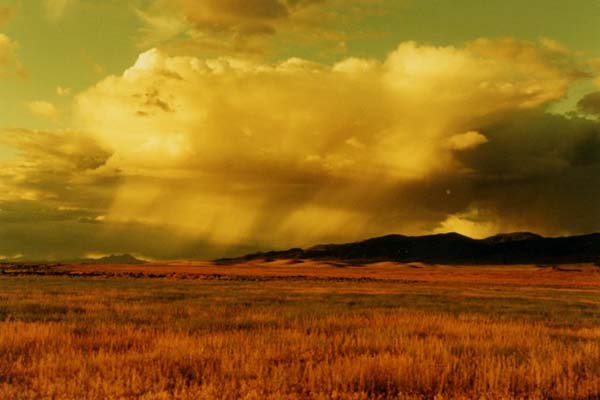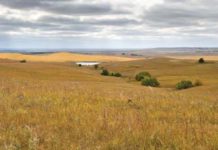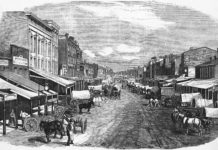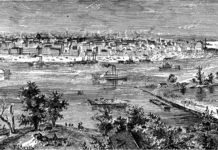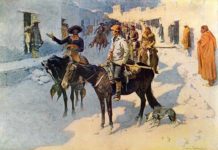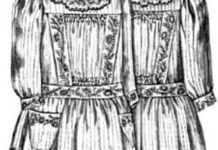Lone? You mean, as in “Lonely?” Come and I’ll show you that the prairie is anything but lonely. No, we are not going to see pioneers. They won’t be along here for about another one hundred and fifty or sixty years. About now William Penn should be getting settled back east in what is to be called Pennsylvania. I’d say it’s about the year 1685 right now, give or take a year. Where are we? Well, if the year were 1943 we’d be standing just about in the middle of my parent’s kitchen table in their farmhouse out on the Nebraska plains. I was born on that table. That house burned down shortly after I was born. There was something about Mom doing what she could to rid the place of bedbugs, or over doing it. But what we came out here to see in Nebraska, on the “Lone Prairie,” is somewhat larger than a bedbug, though the pioneers had their share of those, too.
Now look out over there, across the plains. Buffalo! Just about as far as you can see from one direction to the other. It’s hot out here, and will get a whole lot hotter before summer is over. Right now its what you would call Buffalo Summer, just about late June here in the grass country. You can tell by all the scraggly and bare patches on the buffalo. They’re about through shedding their winter wool. This seems to be mostly a cow band. Look at their babies with their new orange-red coats. Those little babes weight between twenty-five and forty pounds when they are born. At about three-months of age they’ll shed that bright coat they are wearing and put on one that’s the same dark color as their parent’s. By fall they will have grown considerably. A good healthy youngster may weigh as much as four hundred pounds.
That buffalo over there is a big fellow. It looks like some bulls are beginning to return to the herd. These full-grown males stand a good six feet at the shoulders and weigh a ton, sometimes more. The cows are only about half that weight and can bear young well into their thirtieth year.
The days are passing here on the plains. It must be about mid-July now. That’s when the rutting season begins. The males of breeding age, sometime after their fifth or sixth year, are returning to the herd to start new families. Now any cow in breeding condition will be plagued with a one-ton admirer up until late August. The buffalo band will stay mostly together through the fall, then many of the older bulls will separate for the winter. Speaking of winter, we’d best be going east, back across the plains towards civilization, before winter sets in. The Buffalo can survive out here, except for an occasional extremely bad season like the one they will call the “Big Die-up.”
Come spring, about April or into May, a new crop of calves will be born and the process will begin again, at least for another couple of hundred years. Right now, in the 1600’s, it’s estimated there are between thirty million and fifty million Buffalo ranging from the mid-Mexico all the way up into Alaska. For now you can even find them over on the other side of the Rocky Mountains into the eastern edge of what will be Oregon Country, then all the way east nearly to the coast. But that won’t last. The Indians, who are so dependent on the Buffalo, are estimated to be killing them at the rate of two million a year. And they will have lots of help as the years go buy, but that is another story we’ll talk about when we return. There are a whole lot of other interesting creatures out here on the “Lone Prairie” to see.


